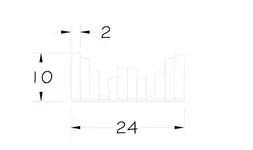RICK FITZPATRICK
New member
Man, it is absolutely amazing when you punch in a word into a search program. I punched in DEFRACTAL.
http://www.acousticdiffusers.co.uk/prices.htm
Just amazing how many people are making these.
Heres some sideline info. Not totally related to DIY, but still related.
http://www.mech.canterbury.ac.nz/info/labs/Reverb Room.htm
Damn, I knew someone would use chemetals(laminates) before I could get to it
http://www.pcimillwork.net/display/p_sony_4.html
Thats what I want mine to look like.....dream on rick!
fitz
PS. These interior fixtures were built by Commercial Architectural Millwork Co.
I work for one. I am a detailer, and draftsman, and see this level daily. The principles are easy. The actual millwork is complex. Large cylindrical diffuser sections are most likely made of either sonotubes, or laun ply, and you can order them bare, and post laminate them. Sonotubes are 5/16" carboard tubes used for concrete form work, and are also available. Any diameter, any length to 20'. The quadratics are most likely rectangular MDF tubes, with side dados for knockdown assembly. That allows prelam of the well bottoms and sides, with fronts being postlamed. Lamination sequence is the real trick when it comes to this stuff. Usually, we prelam whole sheets, cut parts so as to dado through the laminate, rabit the edges, assemble and post lam the faces. I'll post a section drawing soon. Well widths and depths are the acousticians responsibility. The design firm would supply the basic section drawings, my job is to detail it for construction. Everything. Cabinets, tables, millwork, trim, doors and jams
and anything dictated by the millwork package.
http://www.acousticdiffusers.co.uk/prices.htm
Just amazing how many people are making these.
Heres some sideline info. Not totally related to DIY, but still related.
http://www.mech.canterbury.ac.nz/info/labs/Reverb Room.htm
Damn, I knew someone would use chemetals(laminates) before I could get to it
http://www.pcimillwork.net/display/p_sony_4.html
Thats what I want mine to look like.....dream on rick!
fitz
PS. These interior fixtures were built by Commercial Architectural Millwork Co.
I work for one. I am a detailer, and draftsman, and see this level daily. The principles are easy. The actual millwork is complex. Large cylindrical diffuser sections are most likely made of either sonotubes, or laun ply, and you can order them bare, and post laminate them. Sonotubes are 5/16" carboard tubes used for concrete form work, and are also available. Any diameter, any length to 20'. The quadratics are most likely rectangular MDF tubes, with side dados for knockdown assembly. That allows prelam of the well bottoms and sides, with fronts being postlamed. Lamination sequence is the real trick when it comes to this stuff. Usually, we prelam whole sheets, cut parts so as to dado through the laminate, rabit the edges, assemble and post lam the faces. I'll post a section drawing soon. Well widths and depths are the acousticians responsibility. The design firm would supply the basic section drawings, my job is to detail it for construction. Everything. Cabinets, tables, millwork, trim, doors and jams
and anything dictated by the millwork package.
Last edited:

 Gotta test cutting methods to see what works.
Gotta test cutting methods to see what works.